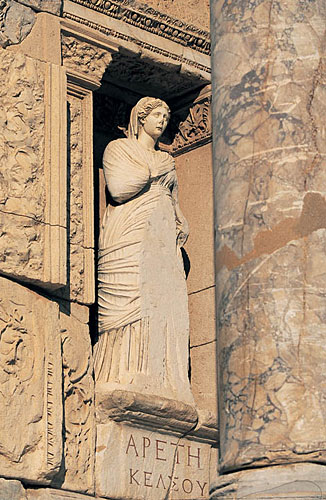
This course examines the forms, uses and meanings of sculpture in public and private spaces in the Mediterranean world from the period of Alexander the Great (336-323 BC) to the reign of the Roman emperor Constantine (AD 312-337). In chronological and developmental sequence, lectures and class discussion explore a wide variety of topics ranging from the archaeological, functional, and social contexts of sculptural works to the reconstruction of their original appearance (including their color) and significance. Images of gods, goddesses, mythical creatures and animals mingled with portraits of public and private individuals in indoor and outdoor settings--settings that were often additionally adorned with elaborate paintings, architectural embellishments and other decorative and symbolic accouterments. These environments, in turn, provided visually rich, message-laden backdrops for the performance of social, political and cultic rituals. While analyzing the cultural work that sculptures performed in the ancient world, students also learn about individual sculptors, their styles, the works that made them famous, and the patrons who set the agendas that these works were intended to fulfill.
Assessment of student performance is based on midterm and final examinations, journals focused on the assigned readings, class attendance and participation, and two short papers. Graduate students enrolled in HistArt/Clarch 536 must write a substantial research paper and participate in an additional weekly discussion session. Estimated cost of materials: $50 or more, but less than $100. IV. 1